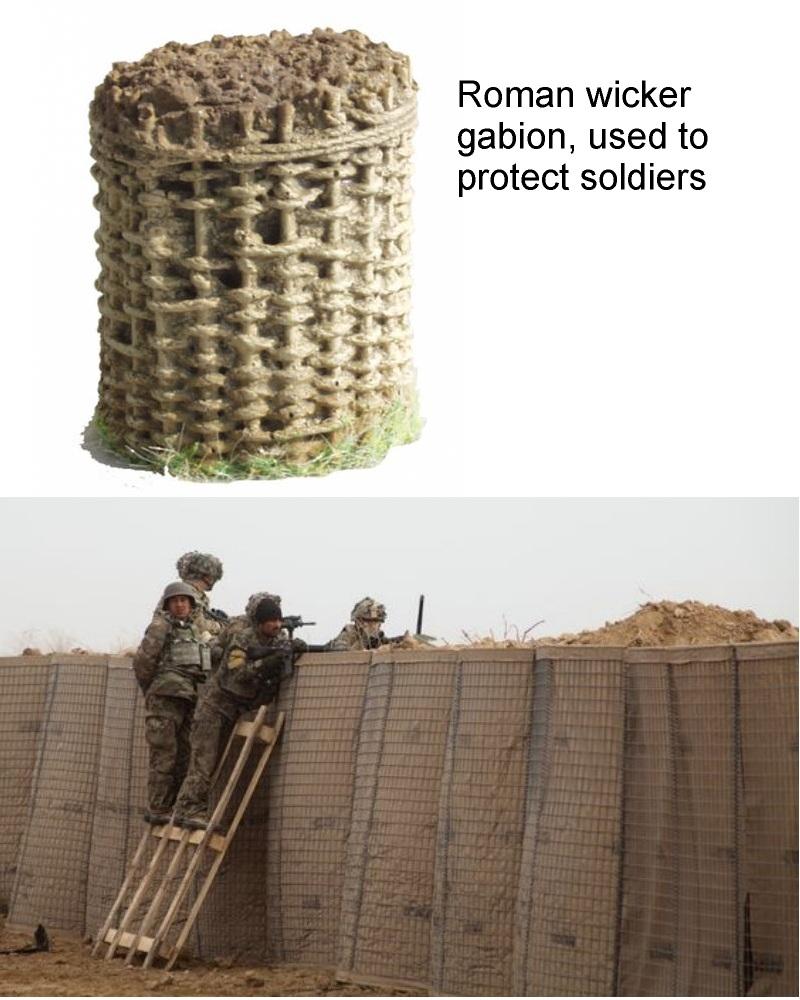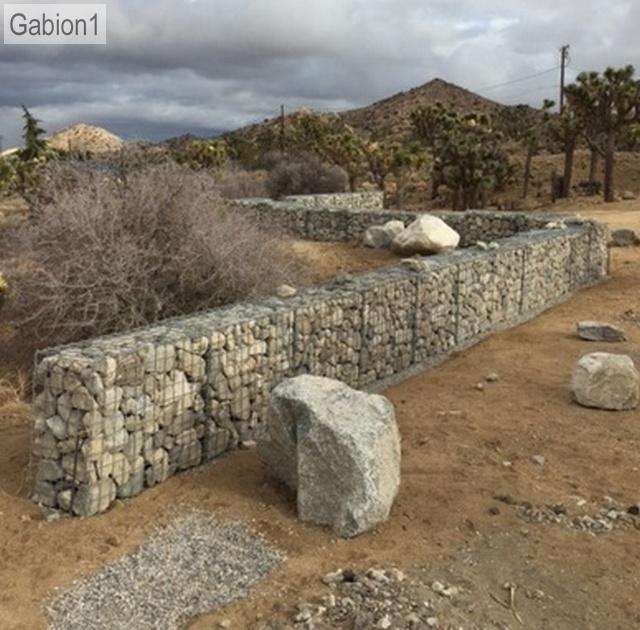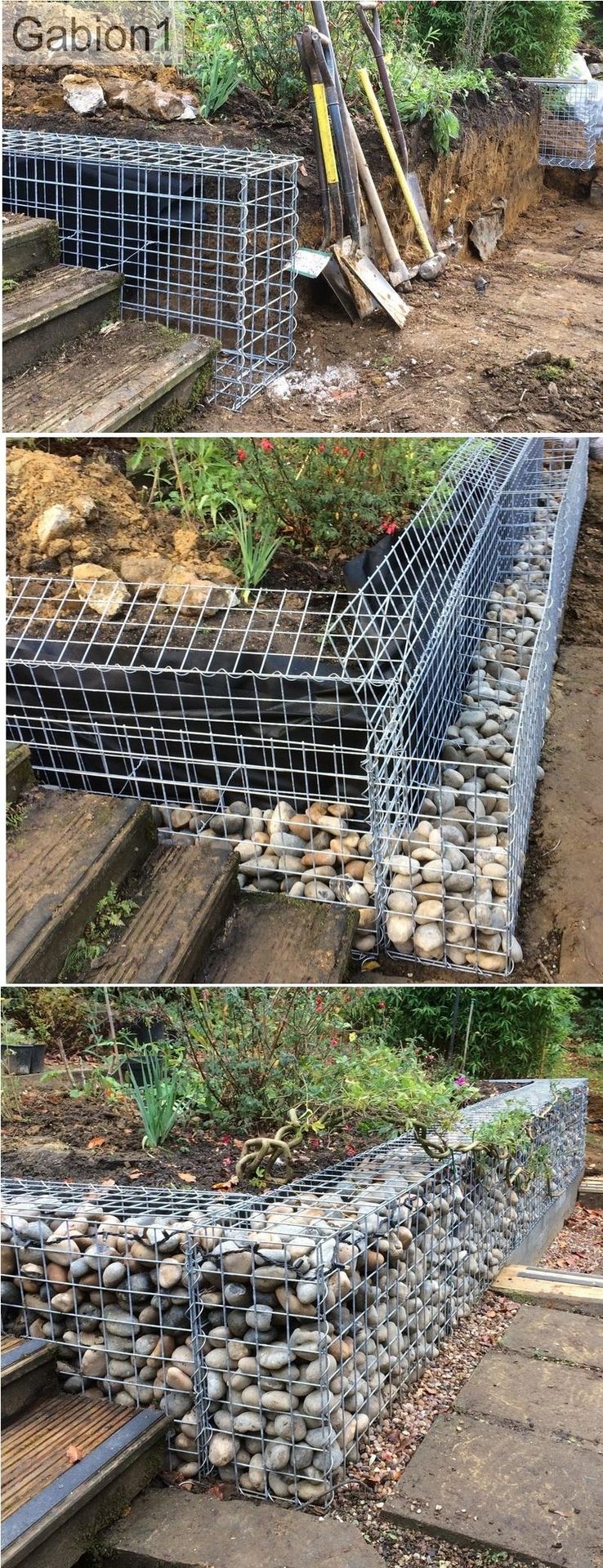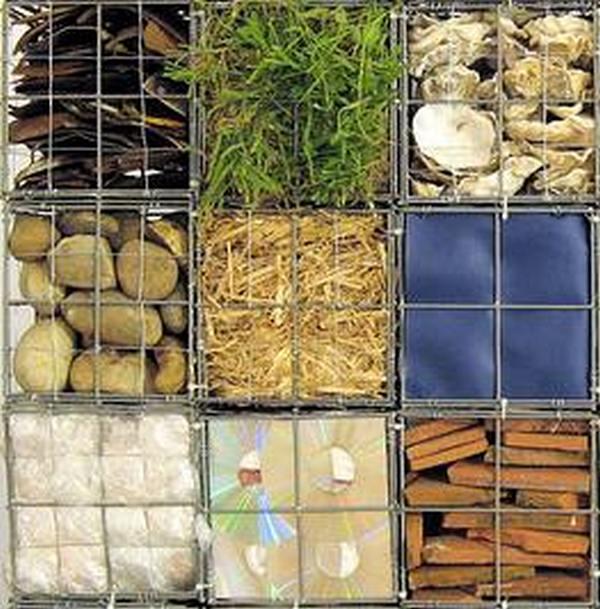Gabion FAQs
Answers to common questions.

Who invented gabions?
Gabions were invented by the Romans for military defences. They are still being used by the army today

What are gabions used for?
Retaining walls Garden walls Erosion control Garden planters and furniture Fences Noise control walls

How do gabions work?
Gabion baskets are supplied as flat pack kitsets, that you assemble and fill with local rock. Normally you do not need a concrete foundation.
Possible size options are in increments of 3″
eg 12″, 15″, 18″, 21″, 24″……………etc.
click for Prices and Sizes info
Number 4
Number 5
How to install gabions?
Gabion baskets are supplied as flat pack kitsets, that you assemble and fill with local rock.
Are gabion walls expensive?
Gabion do not require skilled labor to assemble and can be filled with local rock as long as the rock is hard, heavy, durable and free draining.
How long do gabions last?
In non marine environments, galfan coated gabions will last well over 50 years
Number 6
They are quick and easy to assemble
Save Money
Use a cheap rock in the center of your gabion baskets.
Advantages of Gabions
Flat packed gabions enable you to build a low cost stone walls.
Gabions are most commonly filled with rocks, but you can fill them with many other materials to create interesting landscaping effects.
Gabion1 has over 10,000 different sized gabions
The Lego styled modular system gives you limitless layouts and design options.
For garden landscaping you are only limited by your imagination

Number 10
What sizes do gabions come in?
Kitset gabion baskets come in 1000’s of different sizes eg 12′, 15″, 18″, 21″, 24″……………etc. up to a maximum length of 7′ long and maximum height or thickness of 5′
click for the 500 more commonly requested sizes info
INTERESTING LINKS
Here are some interesting links for you! Enjoy your stay :)
PAGES
- 1.5:1 Gabion baskets
- 1.5:1 Gabion baskets under 4′
- 10 things you need to know about gabions
- 2:1 Gabion baskets
- 2:1 Gabion baskets under 4′
- 3:1 Gabion baskets, support posts required
- 4:1 Gabion baskets, support posts required
- Bridge buttress protection with gabions
- Cart
- Cart2
- Checkout
- Checkout
- Contact Us
- Custom Size and Pricing Form
- Gabion Assembly Shuttering
- Gabion Basket Curved Wall Examples
- Gabion Basket Curved Wall How To
- Gabion Basket Design Life Chart
- Gabion Basket Furniture
- Gabion Basket Information-Adw
- Gabion Basket Information-g-disp-h-h-garden
- Gabion Basket Information-g-disp-h-h-home
- Gabion Basket Information-g-disp-h-h-improve
- Gabion Basket Information-g-disp-h-h-making
- Gabion Basket Information-g-disp-h-h-yard
- Gabion Basket Information-g-rem-desk
- Gabion Basket Information-g-rem-m
- Gabion Basket Information-g-rem-m1
- Gabion Basket Information-m35
- Gabion Basket Information-m45
- Gabion Basket Information-m55
- Gabion Basket Information-m65
- Gabion Basket Information-Pin-pro
- Gabion Basket Information-pinterest
- Gabion Basket Information-w35
- Gabion Basket Information-w55
- Gabion baskets under 4′ tall
- Gabion component prices
- Gabion corten corner assembly information
- Gabion Cube baskets
- Gabion Diaphragm
- Gabion Erosion Control
- Gabion erosion wall
- Gabion Fence with timber
- Gabion foot bridge
- Gabion Foundations
- Gabion how to videos
- Gabion Information-Pin-1
- Gabion Information-Pin-11
- Gabion Information-Pin-12
- Gabion Information-pin-13
- Gabion Information-Pin-14
- Gabion Information-Pin-4
- Gabion Information-Pin-6
- Gabion Information-Pin-7
- Gabion Information-Pin-8
- Gabion lake jetty
- Gabion Landscaping Ideas
- Gabion Mail Box
- Gabion mesh repairs
- Gabion Partition Wall
- Gabion Patio Wall
- Gabion pipe culvert protection
- Gabion Pizza Oven Bases m35-ca
- Gabion Pizza Oven Bases m45-ca
- Gabion Pizza Oven Bases m55-ca
- Gabion Pizza Oven Bases m65-ca
- Gabion Pizza Oven Bases w35-ca
- Gabion Pizza Oven Bases w55-ca
- Gabion Pizza Oven Bases-Construction
- Gabion Railway Ballast
- Gabion retaining small flowers
- Gabion retaining wall brick bond
- Gabion Retaining Wall Design Guidelines
- Gabion retaining wall offset
- Gabion retaining wall on slope
- Gabion retaining wall with steps
- Gabion Retaining Walls
- Gabion Retaining Walls AL1
- Gabion Retaining Walls-1
- Gabion river crossing
- Gabion Rock Size
- Gabion Seating Construction Details-1
- Gabion Seating Construction Details-2
- Gabion Seating Construction Details-3
- Gabion Seating Construction Details-4
- Gabion Seating Construction Details-5
- Gabion Seating Construction Details-6
- Gabion Seating Construction Details-7
- Gabion Seating Construction Details-8
- Gabion Seating Construction Details-9
- Gabion Seating Idea
- Gabion Step Options
- Gabion Stone Fences
- Gabion Wall
- Gabion wall stability guidelines
- Gabion wall under 4′ tall
- Gabion wall with night lights
- Gabion Wall with seat
- Gabion weir layout
- Gabion Wire Mesh Size Information
- Gabion1 Outdoor Dining Table
- Garden brick wall design
- Garden Stone Wall Design
- Homepage
- How to order and buy your gabions
- Kitset Gabion Prices
- Kitset Retaining Wall Gabion Prices under 4′ tall
- Large gabion erosion wall
- My Account
- Payment Credit Card
- Payment Error
- Payment Thankyou
- Phone Us
- Product help
- Product Inquiry
- River bank conservation
- River bank preservation
- River Bank Protection
- River bank stabilization
- Shop
- Small gabion erosion wall
- Square gabions
CATEGORIES
ARCHIVE